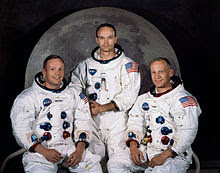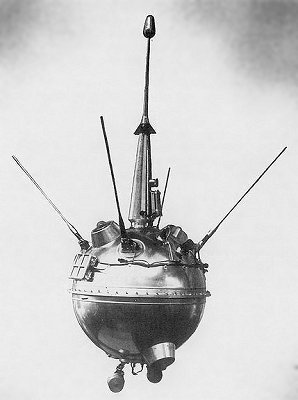The word month comes from an old term for the
moon, a month being approximately the length of one orbit of the moon around
the Earth.
No word in the
English language rhymes with month.
Any month that starts on a Sunday will have a Friday the 13th in it.
The first letter of each month from July through November spells JASON.
The poem to remember the days of the month "Thirty days has September", taught to
children to this day, is actually at least a 600-year-old poem, with the earliest known published forms written in Old
English and Latin, from 1425 and 1488, respectively.
Here is
a list of songs with months in the title.
JANUARY
The Romans named January after Janus, the God of gateways. Janus had two
heads so he could look in both directions, back at the old year and forward towards the new year, at the same time.
 |
| Statue of the Roman God Janus. |
January and February were the last two months to be added to the Roman
calendar, as the Romans originally considered winter a monthless period.
Although March was originally the first month, January became the new first month because that was when the Romans chose the new consuls.
The Anglo-Saxons called January "Wulfmonath" as it was the month hungry wolves came scavenging at people's
doors.
January is the coldest month in the Northern Hemisphere, and the warmest in the Southern Hemisphere.
The first recorded reference to a "January sale" in the UK was in 1865.
FEBRUARY
The name of February came from the Latin "februa," a means of cleansing, which referred to the pre-spring purification rituals.
Before
Julius Caesar reformed the calendar in 46BC, February was the only month with an even number of
days. All the rest had 29 or 31. Odd numbers were seen as luckier.
Even when Caesar introduced leap years, the last day of February was the 28th. The extra day was achieved by counting February 24 twice.
The Anglo-Saxons called February Solmonath meaning month of mud or Kale-monath meaning kale or
cabbage month.
The only time that February is mentioned in a Shakespeare play is when Don Pedro says in
Much Ado About Nothing: "You have such a February face, So full of frost, of storm and cloudiness."
The only time a month begins and ends on the same day of the week is February in a leap year.
 |
| February 1900 Japanese calendar showing that 1900 was not a leap year |
February 1865 is the only month in recorded history not to have had a full moon.
MARCH
The month of March comes from the Latin “Martius,” named for Mars, the Roman god of war who was also regarded as a guardian of
agriculture and an ancestor of the Roman people. His month was the beginning of the season for both
farming and warfare.
 |
| Colossal statue of Mars (Pyrrhus) - User:Jean-Pol GRANDMONT (2011), Wikipedia Commons |
March was the first month of the year until the Gregorian
calendar began to be used in 1752.
March was called Hlyda or Lide in Old English, which is a reference to the loud winds.
March is the only month with three consecutive consonants in its name in
English.
APRIL
It is unclear as to where April got its name. A common theory is that it comes from the Latin word "aperire", meaning "to open", referring to
flowers opening in spring. Another theory is that the name could come from Aphrodite, the Greek goddess of love.
In Old English the month of April was called Eastermonad.
In Western
Christianity, there is a bigger likelihood of Easter falling in April than in March.
 |
| Eggs celebrating Easter, |
In the English language, April is the first of three months in-a-row, along with May and June, that is also a female given name.
MAY
The Romans named the month of May after Maia, a goddess of growth and fertility.
 |
| Vulcan and Maia (1585) by Bartholomäus Spranger |
In Old English, May was called Thrimilce (three milks), the season when a
cow could be milked three times between sunrise and evening.
In many north hemisphere countries May Day, which is on May 1, is celebrated as the beginning of summer. It is a traditional spring holiday in many European cultures.
Dancing, singing, and
cake are usually part of the festivities.
Traditional English May Day rites and celebrations include crowning a May Queen and celebrations involving a maypole, around which
dancers often circle with ribbons. Historically, Morris dancing has been linked to May Day celebrations.
Labor Day is celebrated on a different day in most countries. Many choose May Day as their day to honor working people. Socialists,
communists and other like-minded people celebrate it as International Workers' Day.
In any year, no other month begins or ends on the same day as May.
No US President has ever died during the month of May.
James Buchanan narrowly avoided doing so, dying on the morning of June 1, 1868.
JUNE
 |
| June, Leandro Bassano |
June is named for the Roman goddess Juno, the wife of Jupiter.
Juno was the Roman goddess of marriage. Because of this, getting married in June was thought to be lucky.
June begins on a different day of the week each year.
Splitting the year into four seasons of three full months apiece based on the Gregorian calendar, June 1st is the meteorological first day of summer.
Billy Connolly: "There are two seasons in Scotland: June and Winter."
JULY
The month of July was named after
Julius Caesar by a decision of the Roman Senate in 44 BC as July was the month of his
birth. Before that, it had been known as Quintilis (fifth) as it was the fifth month in the old calendar.
 |
| The Tusculum portrait, of Caesar. By Gautier Poupeau from Paris, France - Wikipedis Commons |
Until the 18th century, the word July in English had the stress on the first syllable and rhymed with duly or truly.
July 1 is not the mid-point of the year. The exact halfway point comes at 1pm BST on July 3 in a non-leap year.
No month ends on the same day of the week as July unless it is a leap year, when January does so.
AUGUST
August is named after
Augustus, first Emperor of Rome who chose it as it was the month of his greatest triumphs. He died in August AD 14.
 |
| The statue known as the Augustus of Prima Porta, 1st century. By Till Niermann - Wikipedia Commons |
Until 8 BC, the Romans called August 'Sextilis' as it was the sixth month of their year.
The Anglo-Saxons called August by the name Weod-monath (weed month) as it is the month when weeds grow most rapidly.
August' is the only name of a month that is used as a male name. April, May and June are all female names.
SEPTEMBER
September mean 'seven' in Latin as it was originally the seventh month in the Julian calendar, created by Julius Caesar
September is the only month with the same number of letters in its name in English as the number of the month. It is the ninth month and has nine letters.
The Anglo-Saxons called September 'Gerst monath', meaning 'barley month'.
 |
| Barley field |
In any year, no other month ends on the same day as September.
In 1752 September had only 19 days in the UK as the country moved from the Julian to the Gregorian calendar.
On an average September day more
babies are
born in the US than on a day in any other month.
OCTOBER
The name "October" comes from the Latin oct for "eight". It was the eighth month of the year before January and February were added to the beginning of the year.
The Anglo-Saxons called October Winterfylleth meaning the 'fullness' (not dirtiness) of winter. It signified the beginning of winter.
The Welsh for October is Hydref (originally Hyddfref), a word signifying the distinctive sound uttered by
cattle.
In Catholic Europe in 1582, October had only 21 days. When
countries changed from the Julian to the Gregorian calendar, the days from 5-14 October were omitted.
NOVEMBER
The name 'November' comes from the Latin for nine (novem), as it was the ninth month of the Roman calendar.
In Old English November was 'Windmonath' (wind month) or 'Blotmonath' (blood or sacrifice month) referring to the time of slaughter of
farm animals.
The Dutch called it 'slachtmaand' (slaughter month); in Welsh it is 'Tachwedd', also meaning 'slaughter'.
November is the only month used to represent a letter in the phonetic
alphabet.
The first Sunday of Advent is slightly more likely to fall in November than in December.
 |
| Advent wreath. By Micha L. Rieser - Wikipedia Commons |
In any given year, November starts on the same day of the week as March and ends on the same day of the week as August.
DECEMBER
The name of the month coming from the Latin decem for "ten", it was the tenth month of the year before January and February were added to the Roman calendar.
At the North Pole, the Sun does not rise in December; at the South Pole, it does not set.
More people suffer fatal falls in December in the UK than any other month.
People born in December have the best statistical chance of living past 100 years old.
Source
Daily Express








































